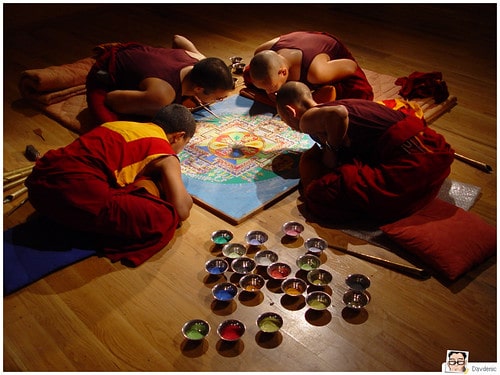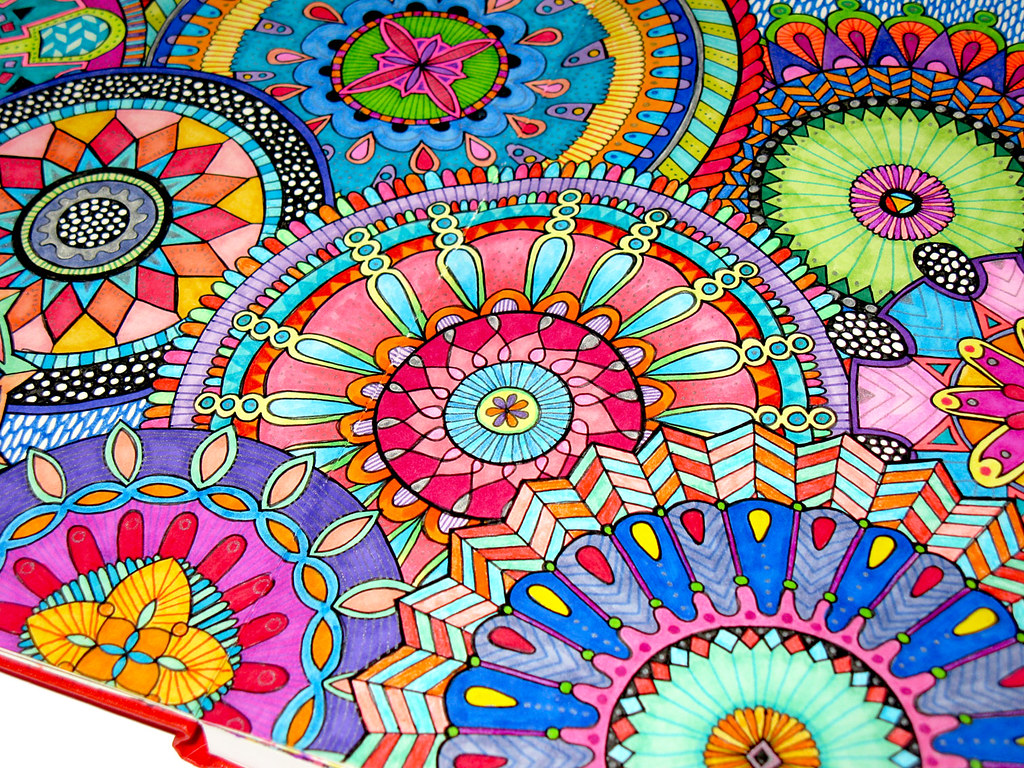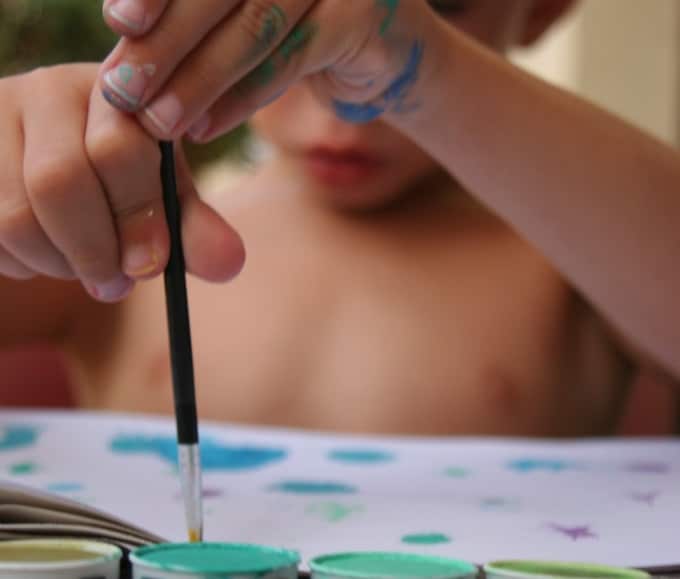
«Tibetan monaci do not complete a mandala» by davdenic is licensed under CC BY-NC-ND 2.0
There is no doubt that mandalas are in fashion, but what are they really? What is its meaning?
People say that Buddhist monks in Tibet depict these circular geometric figures with a dense sand dyed with natural pigments, created from the crushing of stones. They use various instruments to form them precisely, taking weeks. This process makes them bear in mind the idea of the here and now. An intricate artistic work that they will destroy when finished, thus remembering that everything in material life is temporary, has a beginning and an end. When destroyed, the sand is returned to its origin, specifically to a river, symbolizing the cycle of nature.
But the figure of the mandala goes much further. Concentric shapes have not only been represented by Hinduism and Buddhism, they are also characteristic of other religions and peoples, as is the case of the mandorlas and rosettes of Christianity, the chacanas of the Andean peoples, the Celtic symbols, etc. Why this tendency to represent concentric structures?
According to the famous Swiss psychologist Carl Jung (1875 – 1961), the mandala is so frequently created by the human being because it is a typical form of archetype, that is, a universal archaic pattern or image that derives from the collective unconscious. The circle is a symbol of perfection and totality, always representing a center and a periphery that is created from the center. Thus, we tend to perform mandalas for the regulation of our psyche. That is, to calm the anxious and scattered mind, the drawing of this type of patterns causes a form of reorganization and focus of thought to occur, thus calming the emotions.

“Moleskine10” by Hello Angel Creative is licensed under CC BY-NC-ND 2.0
This idea of the mandala as a geometric path to inner tranquility is used by many psychologists today.
The current concept of Art Therapy is remarkable. This therapy is included within those known as Art Therapies (Art Therapy, Dance Therapy, Music Therapy, Theatrical Therapy …), which are based on the use of the creative process in a specific intervention with therapeutic, development, rehabilitation, educational objectives and a long etc. The important thing about these therapies is not in the result, but in the process. As in the case of Buddhist monks, it is a way to reconnect with the present moment, in addition to a mode of emotional expression and self-knowledge.

«Art therapy and childhood» by cultura social is licensed under CC BY-NC-ND 2.0
In the case of Art therapy, Plastic Arts are used in these creative processes. It is very common to create mandalas during the sessions, as well as coloring them. It is more than studied that the creative process generates multiple benefits in everyone who practices it, being a strong stress reducer. A form of meditation available to everyone.
And now that we want to go crazy drawing mandalas, where do we start?
I advise you to let your imagination fly, to take a pen or marker and start from a center. From there create layers as figures come to your mind. It is important not to obsess over perfection and get carried away when drawing. Once created, you can color it with the colors you prefer, using pencils, markers or whatever technique you want. The result will surprise you and will be your own exclusive creation. In case you don’t like to draw them, you can buy a book (there is a crowd) and relax by coloring them. Another way to enjoy mandalas is simply observing them, in all their forms and connections. To inspire you, there are great current artists who are dedicated to painting mandalas. Surfing the internet we can find thousands.
In addition, you can analyze more deeply what meaning your mandala has according to the colors you have used. The effect that color produces in humans has also been widely studied.
What are you waiting for to start drawing mandalas?


